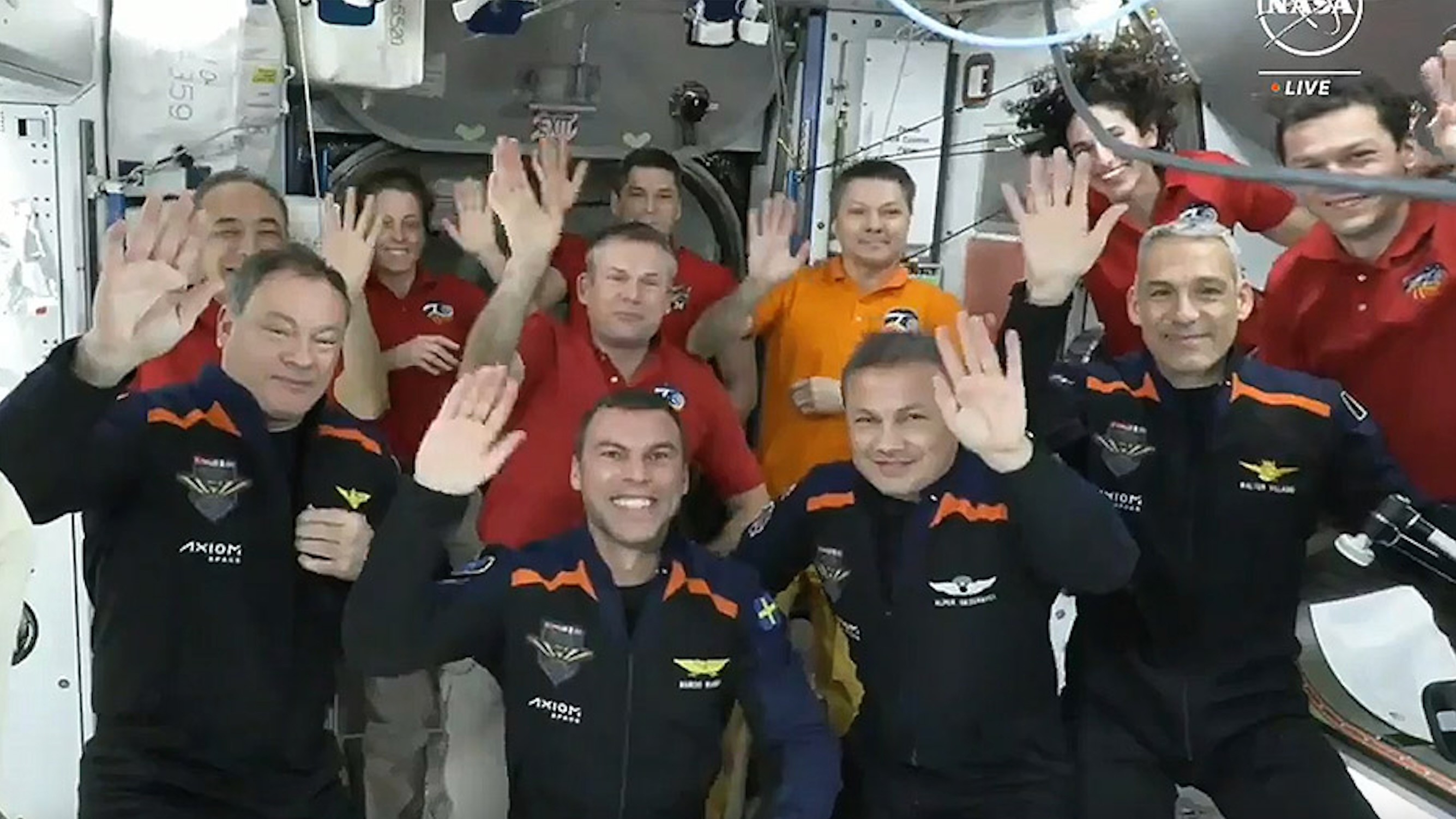20 people in space! Humanity quietly tied a record last month

Humanity tied a spaceflight record late last month, though the news flew under pretty much everyone's radar.
For a few minutes on Jan. 26, 20 people were in space at the same time. The International Space Station (ISS) hosted 11 of them — seven long-term crewmembers and four visitors on the private Ax-3 mission — and three occupied China's Tiangong space station.
The other six were aboard Virgin Galactic's VSS Unity space plane, which reached suborbital space on the company's Galactic 06 mission. Four of those six were passengers, while two were piloting Unity on Galactic 06, which lasted about an hour from liftoff to touchdown.
At the moment, there are 14 people off Earth — the three Tiangong residents, the seven long-term ISS astronauts and the four Ax-3 flyers, who departed the orbiting lab on Wednesday (Feb. 7) in their SpaceX Crew Dragon capsule and are scheduled to splash down on Friday morning (Feb. 9).
Related: The most extreme human spaceflight records
Virgin Galactic was also involved the first time 20 humans were in space at once, a milestone notched on May 23 of last year. The allocations were similar on that day: six people on Unity (on a flight called Unity 25, the last mission before Virgin Galactic began commercial service), three on Tiangong and 11 on the ISS (seven long-term spaceflyers, along with the four crewmembers of the private Ax-2 mission).
Not everyone will recognize the 20-person record, however, because Virgin Galactic flights get just 55 miles (88 kilometers) or so above Earth at their highest point.
Breaking space news, the latest updates on rocket launches, skywatching events and more!
That's high enough to reach space according to NASA and the U.S. military, which set the boundary at 50 miles (80 km) up. But the international community generally goes with the "Kármán line," which lies at an altitude of 62 miles (100 km).
Indeed, Guinness World Records puts the most-people-in-space mark at 19, set during the NS-19 suborbital flight of Blue Origin's New Shepard vehicle on Dec. 11, 2021. New Shepard gets slightly above the Kármán line on its brief missions.
The record for most people in orbit is perhaps more meaningful, given how much energy and effort are required to circle our planet. That mark is 17, set during a brief stretch in May 2023 when Tiangong hosted two three-person crews while 11 people (including the Ax-2 astronauts) lived aboard the ISS.
Hopefully, these numbers will seem laughably small 10 or 15 years from now. Several private space stations are in development at the moment, and both NASA and a China-led coalition aim to get people back to the moon over the next decade or so.
In addition, SpaceX is developing a massive rocket called Starship to help settle both the moon and Mars. So 19 or 20 people off Earth at once will be just the beginning, if at least some of these space dreams come true.

Michael Wall is a Senior Space Writer with Space.com and joined the team in 2010. He primarily covers exoplanets, spaceflight and military space, but has been known to dabble in the space art beat. His book about the search for alien life, "Out There," was published on Nov. 13, 2018. Before becoming a science writer, Michael worked as a herpetologist and wildlife biologist. He has a Ph.D. in evolutionary biology from the University of Sydney, Australia, a bachelor's degree from the University of Arizona, and a graduate certificate in science writing from the University of California, Santa Cruz. To find out what his latest project is, you can follow Michael on Twitter.
